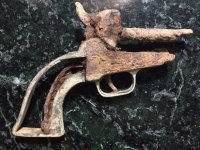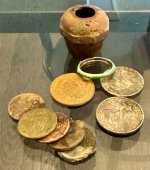newnan man
Gold Member
In her book "Life and Death at Windover" author and Bioarchaeologist Rachael Wentz makes what I think is an interesting statement. She, while discussing the DNA recovered from the water burials says that analyses shows the people of the Windover site were not related to any living Native American populations or any prehistoric groups yet sampled. She does say that DNA markers show they are linked to ancient Asian groups, but are not related to Native Americans. This was written in 2012 but I have not seen any research that updates these finds.
Remember this site is over 7 thousand years old and is an amazing find and study. I have often wondered why we don't hear more about the studies and research from Windover. They found intact brain matter and the continent's oldest textiles created on a loom. Water burials unlike anywhere else in the world. Why is more information not forthcoming I wonder? Sorry for the rant, it's hot outside so I'm just doing some reading.
Remember this site is over 7 thousand years old and is an amazing find and study. I have often wondered why we don't hear more about the studies and research from Windover. They found intact brain matter and the continent's oldest textiles created on a loom. Water burials unlike anywhere else in the world. Why is more information not forthcoming I wonder? Sorry for the rant, it's hot outside so I'm just doing some reading.
Upvote
0




